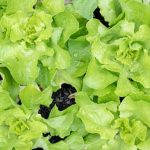What are the dimensions of raised beds for vegetable gardening? Raised bed gardening offers numerous benefits, including improved soil drainage, better pest control, and easier access for planting and harvesting. When considering the dimensions of a raised bed for vegetable gardening, it’s essential to choose the right size to maximize the space and yield of your garden.
Before diving into specific dimensions, it’s crucial to understand the advantages of using raised beds for vegetable gardening. The raised structure allows for better control over soil conditions, which is especially beneficial in areas with poor soil quality. Additionally, raised beds reduce the need for tilling and weeding, making them an ideal option for low-maintenance gardening.
When deciding on the dimensions of your raised bed, factors such as location and available space should be considered. This includes choosing the right materials and customizing the dimensions to fit your specific needs and gardening goals. In this article, we will explore everything you need to know about selecting the best dimensions for your raised bed vegetable garden.
Choosing the Right Location for Your Raised Bed
The location of your raised bed is crucial to the success of your vegetable garden. When choosing a location, it is important to consider factors such as sunlight exposure, drainage, and accessibility.
Most vegetables require at least 6-8 hours of direct sunlight, so it is best to place your raised bed in an area that receives adequate sunlight throughout the day. Additionally, make sure that the location has good drainage to prevent waterlogging, which can lead to root rot and other issues.
Accessibility is another key consideration when choosing the location for your raised bed. It should be easily accessible for planting, weeding, watering, and harvesting. Consider placing the raised bed close to a water source to make watering more convenient. Also, if you plan on growing a variety of vegetables, it may be helpful to place the raised bed near your kitchen for easy access when you need fresh produce.
In addition to these factors, you should also take into account any potential obstacles such as trees or structures that may cast shade over the raised bed or compete with the vegetables for water and nutrients. By carefully considering these factors when choosing the location for your raised bed, you can create an optimal environment for growing healthy and productive vegetables.
| Factors | Considerations |
|---|---|
| Sunlight Exposure | At least 6-8 hours of direct sunlight |
| Drainage | Good drainage to prevent waterlogging |
| Accessibility | Easily accessible for planting, weeding, watering and harvesting |
| Obstacles |
Materials Needed for Building a Raised Bed
When building a raised bed for vegetable gardening, it is important to gather the necessary materials to ensure its durability and functionality. The materials needed will depend on the size of the raised bed, the location, and the specific design preference of the gardener.
Wood
One of the most common materials used for constructing raised beds is wood. Cedar and redwood are popular choices due to their natural resistance to rot and insects. Pressure-treated lumber is also an option, but it is important to line the interior with heavy plastic to prevent any chemicals from leaching into the soil.
Hardware
In addition to the wood, hardware such as screws or nails will be necessary to assemble the raised bed. Galvanized or stainless steel hardware is recommended to prevent rusting over time, which could compromise the structure of the raised bed.
Liner
Depending on the desired height of the raised bed and your specific gardening needs, a liner may be required. This could include landscaping fabric or heavy-duty plastic sheeting to help retain moisture and prevent soil erosion.
Soil
Lastly, a significant amount of soil will be needed to fill the raised bed. It is important to select high-quality garden soil that is suitable for growing vegetables. Many gardeners choose to mix in compost and other organic matter to improve soil fertility.
By gathering these key materials before starting your project, you can ensure that your raised bed will be built properly and ready for successful vegetable gardening.
Standard Dimensions for Raised Beds
When it comes to building raised beds for vegetable gardening, the dimensions of the beds play a crucial role in the success of your garden. Standard dimensions for raised beds can vary depending on the space available and personal preferences. Here are some key considerations for the width, length, and height of raised beds:
- Width: A standard width for a raised bed is usually around 3 to 4 feet. This allows gardeners to easily reach into the center of the bed without stepping on or compacting the soil. Wider beds may make it more difficult to tend to plants in the middle, while narrower beds could limit the types and amount of plants you can grow.
- Length: The length of a raised bed can vary based on available space, but typically ranges from 6 to 12 feet long. Longer beds provide more planting area and can be more efficient, while shorter beds may be easier to manage and maintain.
In terms of height, most standard raised beds are built to be between 6 and 12 inches tall. This provides enough depth for healthy root growth while allowing good drainage and aeration. Taller beds may require more soil and can be difficult to access, while shorter beds may not provide enough room for certain plants’ root systems.
Ultimately, when deciding on the dimensions for your raised bed, it’s important to consider your specific needs and limitations, as well as factors such as accessibility and aesthetics. Customizing the dimensions of your raised bed will ensure that it fits your space and meets your gardening goals. By carefully planning the width, length, and height of your raised bed, you can create an ideal environment for growing healthy vegetables right in your own backyard.
Customizing Raised Bed Dimensions to Fit Your Space and Needs
When it comes to vegetable gardening in raised beds, one size does not fit all. Customizing the dimensions of your raised bed is essential to fit your available space and gardening needs. Here are some tips for customizing raised bed dimensions:
- Assess your space: Measure the area where you plan to place the raised bed. Consider any existing landscaping or structures that may impact the size and shape of your raised bed.
- Consider accessibility: If you have limited mobility or want to make gardening easier on your back, consider making your raised bed wider to allow for easier access from all sides.
- Think about plant variety: Some plants, such as sprawling squash or vine tomatoes, may require more space than others. Plan your raised bed dimensions based on the types of vegetables you want to grow.
Customizing the dimensions of your raised bed allows you to maximize the potential of your garden while accommodating any limitations or preferences you may have. Whether you have a small urban patio or a large backyard, there is a perfect raised bed size for every gardener.
Remember that while customizing the dimensions of your raised bed is important, it’s also crucial to ensure that the depth and width are practical for successful vegetable gardening. Keep in mind that taller beds provide more root space for deep-rooted crops and allow for better drainage, while wider beds can accommodate more plants and provide better air circulation.
With some careful planning and consideration, customizing the dimensions of your raised bed will result in a bountiful harvest of fresh vegetables tailored to your unique gardening space and preferences.
Tips for Soil Preparation in Raised Beds
Soil preparation is a crucial step in ensuring the success of your vegetable garden in raised beds. The quality of the soil will directly impact the health and productivity of your plants. Start by checking the pH level of the soil, which should ideally be between 6.0 to 7.0 for most vegetables. You can use a simple at-home pH testing kit to determine the acidity or alkalinity of your soil.
Once you have determined the pH level, it’s time to amend the soil as needed. Adding organic matter such as compost, aged manure, or peat moss can improve the structure and fertility of the soil in your raised bed. These amendments also help with moisture retention and drainage, ensuring that your plants have access to essential nutrients and water.
In addition to organic matter, consider adding a balanced fertilizer to provide additional nutrients for your vegetables. Mix these amendments thoroughly into the top layer of soil using a garden fork or tiller. It’s important to break up any clumps and create a uniform mixture throughout the raised bed.
| Aspect | Data |
|---|---|
| pH Level | 0 – 7.0 |
| Ideal Amendments | Compost, Aged Manure, Peat Moss |
| Mixing Method | Garden Fork or Tiller |
Best Vegetables to Grow in Raised Beds
When it comes to growing vegetables in raised beds, there are several options that thrive in this type of gardening environment. Whether you’re a beginner or an experienced gardener, raised beds can be an ideal way to cultivate a variety of crops.
Vegetable Options
Some of the best vegetables to grow in raised beds include tomatoes, peppers, lettuce, spinach, carrots, radishes, and herbs such as basil and parsley. These plants tend to do well in the loose, well-drained soil that raised beds offer. Additionally, their root systems can spread out more easily in the deep soil of raised beds compared to traditional garden plots.
Compact Plants
Another consideration for raised bed gardening is choosing compact plants that don’t require much space between them. This allows you to maximize the use of your raised bed by planting more vegetables in a smaller area. Compact varieties of zucchini, cucumbers, and bush beans are great options for raised bed gardens.
Vertical Vegetables
Furthermore, growing vine vegetables such as peas and pole beans can also work well in raised beds with the addition of trellises or supports. This not only saves space but also makes harvesting easier.
By selecting the right vegetables for your raised bed garden and optimizing the use of space through compact and vertical plantings, you can enjoy a bountiful harvest from your vegetable garden throughout the growing season.
Maintenance and Care for Raised Bed Gardens
Once you have set up your raised bed garden, it is essential to know how to properly maintain and care for it in order to ensure a successful yield of vegetables. One of the key advantages of raised bed gardening is the reduced need for weeding, as the raised beds provide a barrier against invasive weeds from outside the designated area. However, regular maintenance such as watering, fertilizing, and monitoring for pests and diseases is still necessary.
Watering is crucial for the health of your vegetable plants in raised beds. The soil in raised beds tends to drain more quickly than traditional gardens, so frequent watering may be needed, especially during hot and dry weather. Consider installing a drip irrigation system or soaker hoses to ensure even watering throughout the raised bed. Additionally, using mulch on top of the soil can help retain moisture and reduce the frequency of watering.
Fertilizing is another important aspect of caring for raised bed gardens. As the nutrients in the soil are used up by growing plants, it’s essential to replenish them with organic matter or balanced fertilizer. Regularly adding compost or aged manure to the soil will help maintain its fertility and ensure healthy growth of your vegetable crops.
Lastly, be diligent in monitoring for pests and diseases in your raised bed garden. Keep an eye out for any signs of infestation or plant damage and take appropriate measures such as applying natural pest control methods or removing infected plants to prevent further spread. By practicing proper maintenance and care for your raised bed garden, you can enjoy a bountiful harvest of fresh vegetables throughout the growing season.
Conclusion
In conclusion, vegetable gardening in raised beds offers numerous advantages for both novice and experienced gardeners. The use of raised beds provides better control over soil quality and drainage, leading to healthier plant growth and higher yields. Additionally, the customizable dimensions of raised beds allow for efficient use of space, making it possible to grow a variety of vegetables even in a small yard or garden.
Furthermore, the raised height of the beds makes gardening more accessible for individuals with physical limitations, as it reduces the need for bending or kneeling. This accessibility factor also extends the gardening season as the soil warms up faster in raised beds, allowing for earlier planting in the spring.
Finally, raised bed gardening requires less maintenance due to reduced weed growth and easier access for watering and harvesting. With proper care and attention to soil preparation, raised bed gardens can provide bountiful harvests year after year. Overall, the benefits of vegetable gardening in raised beds make it a popular and practical choice for home gardeners looking to maximize their growing space and productivity.
Frequently Asked Questions
What Is the Best Size for Raised Vegetable Beds?
The best size for raised vegetable beds ultimately depends on the accessibility and space available in your garden. However, a common recommendation is to make them 4 feet wide so that you can easily reach the middle from either side without stepping onto the soil.
Additionally, consider a length that allows for multiple rows of vegetables and some room for pathways between the beds.
What Is the Best Layout for a Raised Bed Vegetable Garden?
The best layout for a raised bed vegetable garden is typically determined by the amount of sunlight, water access, and garden size. However, one popular layout is to arrange the beds in a grid pattern with enough space between each bed for easy movement and maintenance.
This grid pattern allows for efficient use of space and reduces wasted area in the garden.
Is 2 Feet Wide Enough for Raised Bed?
Whether 2 feet is wide enough for a raised bed depends on what you plan to grow and how much space you have available. While it may be sufficient for smaller plants or herbs, larger vegetables may require more width to accommodate their root systems and overall growth.
Consider the specific needs of the plants you intend to grow before determining if 2 feet is wide enough for your raised bed.

If you’re looking to get into vegetable gardening, or are just looking for some tips on how to make your current garden better, then you’ve come to the right place! My name is Ethel and I have been gardening for years. In this blog, I’m going to share with you some of my best tips on how to create a successful vegetable garden.





